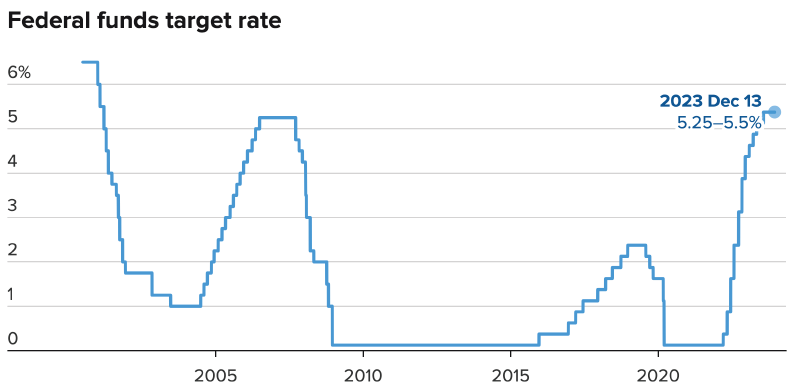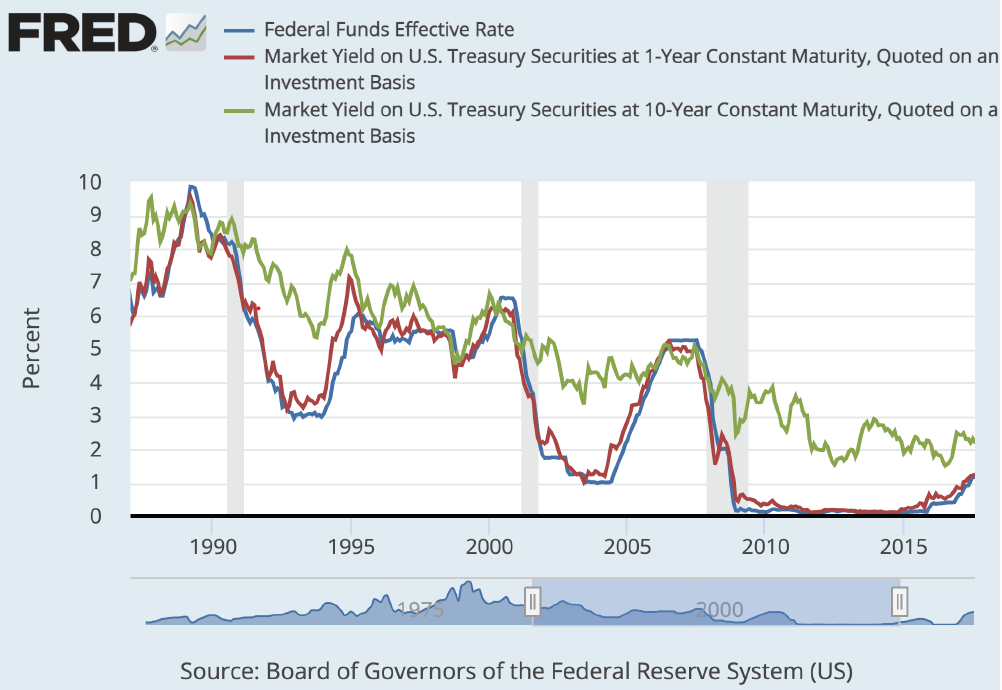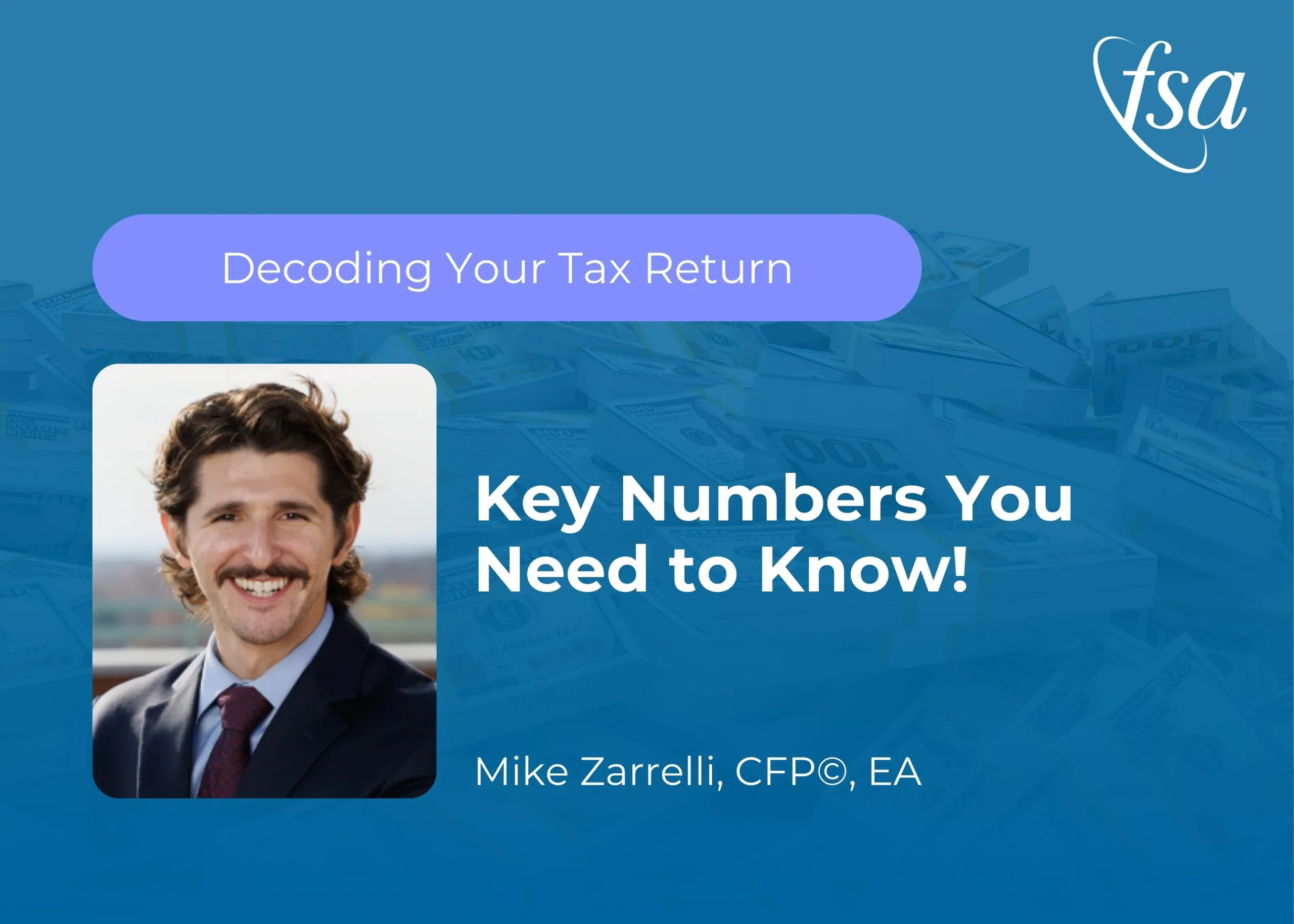Fed Funds Rate Watch
Most of the investing world is a bit weird about the Federal Open Market Committee meetings, which is where the nation’s central bank announces its latest interest rate policy. The announcement concerns the overnight borrowing rate for banks that need short-term financing if they run (temporarily) short on liquidity. The idea is that if the Fed raises or lowers this rate, then interest rates throughout the economy will bounce up or down accordingly, raising or lowering the cost of financing for America’s corporations and potentially leading to recession (and lower stock prices) or economic prosperity (and higher stock prices).
If you believe any of that, then the FOMC news on December 13, 2023, was good: The committee economists and bankers voted unanimously to keep the benchmark overnight borrowing rate somewhere between 5.25% and 5.5%. They also projected (no guarantees of course) that there would be three rate cuts in the coming year, which observers assume will be 0.25% each. In their first meeting of 2024, the Fed decided to leave rates where they are.

It’s worth noting that the Fed has initiated 11 rate hikes in the last two and a half years (see chart), taking the fed funds rate to its highest level in more than two decades. If you follow the logic that drives people to obsess over FOMC announcements, then you might think that this was a sure recipe for economic disaster. But in fact, the most recent economic reports have shown extraordinary growth in the U.S. economy (5.2% annualized in the third quarter), and the U.S. investment markets have only recently topped their all-time highs.
We might also wonder if it’s true that changes in the Fed Funds rate have a direct impact on interest rates. A recent study by the Federal Reserve Bank of St. Louis, a particularly astute group of Fed economists, shows that short-term (1-year) Treasury rates tend to follow the Fed Funds rate pretty closely. But when you move out to ten-year maturities, there is very little correlation. Long-term rates, whether it be government securities, corporate, or municipal obligations, are driven by market forces, supply and demand, and buyer expectations around inflation and the economy as a whole. Corporations and consumers can lock in these longer-term rates or yields pretty much independently of what-ever is announced at the FOMC meeting.

Does that mean we should ignore the Fed’s periodic announcements? The answer for the average investor is probably yes. At FSA, we keep up with the financial news for you and take it into consideration when doing financial planning. That said, it is only one of various factors we account for when helping clients make long-term decisions.
Click here to read more articles: From Our FSA Family, Good and Bad Debt, Next Year’s Tax Brackets, Wage Growth to Celebrate, Should You Buy Long-Term Care Insurance, Convenient Crypto Accessibility, and Effective vs. Marginal Tax Rates.
FSA’s current written Disclosure Brochure and Privacy Notice discussing our current advisory services and fees is available at www.fsawealthpartners.com/disclosures or by calling 301-949-7300.




